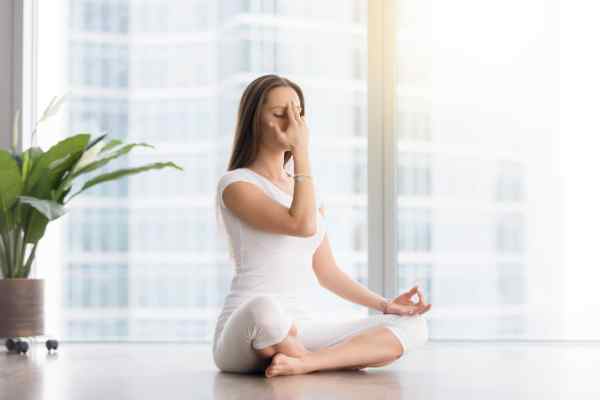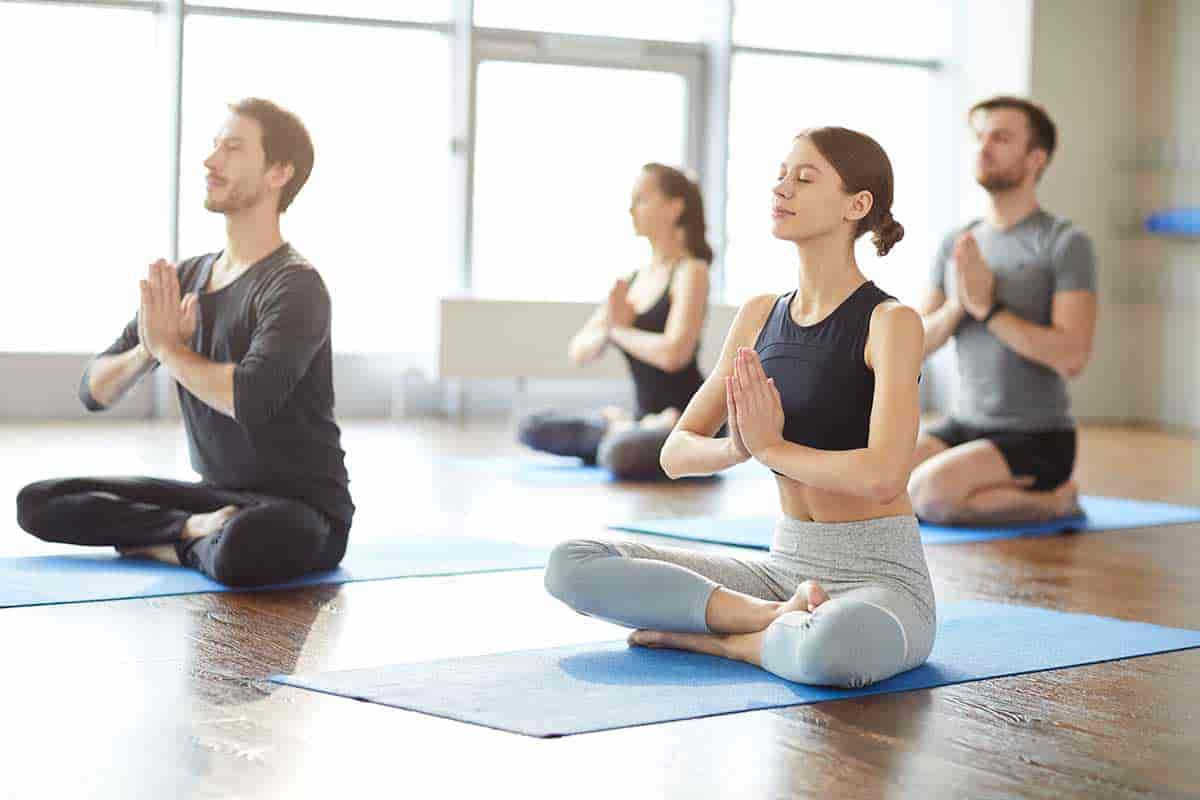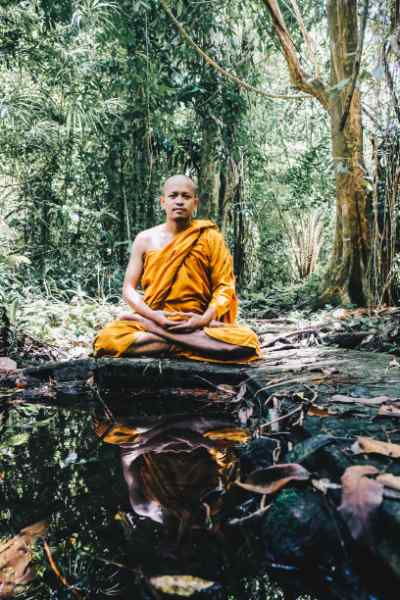Meditation is a sea of calm for anyone looking to retreat from the stresses and pressures of everyday modern life. It is not just about having a moment of calm. There is a reason why many people in the richest countries in the world are flocking to Buddhist practices. For one, anxiety and a variety of other mental health problems have been on the rise.
More and more people are turning to meditation as a way of coping with:
- Anxiety
- Stress
- A cluttered mind
There are five Buddhist meditation techniques you can master, whether you turn to meditation for:
- Mental health reasons
- Relaxation
- Learning to appreciate the blessings in your life
Keep reading to find out why and how the Buddhist practice of meditation, which has been around for over 2,500 years, has been helping millions get on track with their well-being.
Table of Contents
What is the Buddhist Way of Meditation?
There is nothing magical or supernatural about Buddhist meditation. Rather, it is a way of understanding:
- Your body
- Your mind
- The world around you
When you are engaged in meditation, you are treating your body and mind as a team, requiring them to work together for your well-being.
There are a few key components of Buddhist meditation, such as:
- Calm
- Focus
- Observation
- Awakening
Different strands of Buddhism have different types and techniques of meditation – as many as hundreds of forms of meditation! Meditation is central to Buddhist practice and thought.
Do All Buddhists Meditate?
Despite the fact that meditation is an essential part of Buddhism, not all Buddhists meditate. In fact, the practice of meditation was primarily the domain of Buddhist monks for over 2,500 years. It was not until the last few decades that meditation has been taken up by laypeople.
What are the Three Types of Meditation in Buddhism?
While there are many strands of Buddhism and many types and forms of meditation, there are three types of Buddhist meditation that are most common and, more importantly, beginner-friendly. These forms of meditation share any of the same mental and physical health benefits and can fit into your lifestyle, regardless of:
- How busy you are
- Where you live
- Your income level
- How often you travel.
Is Transcendental Meditation Simple And Transformative?
When you picture someone practicing meditation, they are sitting on the floor – or on a chair – cross-legged, arms extended outward, and chanting “oooohhmm” repeatedly. This popular image of Buddhist meditation is representative of transcendental meditation.
Transcendental meditation is one of the most effective yet simple forms of Buddhist meditation. If you are a newcomer to meditation, transcendental meditation is the first you should master.
According to MedicineNet, it is known for numerous benefits, including but not limited to:
- Stress relief
- Sleep quality
- Improved focus and memory
- Improved mental and physical health
Transcendental meditation can be practiced 20 minutes a day. All you need to do is to:
- Pick a quiet, dimly lit room
- Sit comfortably,
- Close your eyes
- Choose a mantra
The hardest part may be clearing your mind and concentrating.
Mindfulness Meditation is One Of The Oldest Forms of Meditation
Also known as “Vipassana meditation,” mindfulness meditation is a powerful way to probe deeply into your mind, thoughts, and feelings. By paying special attention to the contents of your mind and your surroundings, you can reduce your anxiety and stress levels while deepening your appreciation of the positive aspects of your life.
While practicing mindfulness seems like a simple concept, it takes practice; setting aside 15-20 minutes to declutter your mind, breathe deep, relax, and focus is not easy. If you are a beginner, guided mindfulness meditation is a great way to start. There are many great tutorials out there, including a YouTube series by Can You Zen, to help get you started.
Loving Kindness Meditation Can Improve Your Relationships
The best way to master loving-kindness meditation is to practice it consistently. Those who practice Metta meditation, one of the three types of Buddhist meditation, cultivate warm and genuine feelings towards other people by reciting certain words and phrases. These words and phrases are recited with focus and attention.
Like transcendental and mindfulness meditation, loving-kindness meditation has a track record of being effective. According to Healthline, it has been proven to:
- Promote self-compassion
- Decrease stress and anxiety
- Reduce physical pain
- Improve relationships
And these are just some of the many reasons people meditate.
There is more to Metta meditation than reciting phrases. In order to practice it effectively, you need to become comfortable with identifying and acknowledging your positive and negative thoughts and emotions – but do not get hung up on negative! Do not be hard on yourself for feeling these emotions; self-compassion is another important component of loving-kindness meditation.
Five Buddhist Meditation Techniques for Beginners
While there are many beginner-friendly techniques you can master, we will take away the guesswork and give you five Buddhist meditation techniques that will help you develop and maintain consistency and effectiveness in your practice.

First - Begin With A One Session A Week
Practicing meditation on a consistent basis is quite a commitment. Also, consistent practice is the key to successfully mastering the different types of Buddhist meditation. While commitment and consistency are the end-goal, you need to start small.
One meditation session a week is better than starting out strong and then waning in the upcoming months or weeks. Begin with one session a week, 15-20 minutes per session, then gradually increase your number of sessions.
Depending on your schedule and time constraints, you can work your way up to daily sessions – or even twice a day. The key is to go easy on yourself. As with physical exercise, you do not want to overdo it at the beginning.
Second - Pick A Quiet Space and Location
Another aspect of consistent meditation practice is picking the right location or space. This can be anywhere, from your bedroom, a corner in your living room or even the local park early in the morning or you can start meditating at home. The key is to pick a space that will make it easy for you to concentrate, a place you will be free from distraction.
If you are opting for an indoor meditation space, furniture is another important component. A comfortable chair, mat, or set of cushions will be all you need. Artwork or a completely plain space can also help, but it depends on your personal preference.
A dedicated meditation room or space will become an important part of your meditation practice. It goes without saying that this applies to you if you are practicing meditation on your own, without any guidance from a teacher or a class.
Third - Set Aside A Time
The types of Buddhist meditation that we have outlined require 15-20 minutes for every session. While meditation time is not set in stone, it is a good idea to decide on a fixed time for your sessions and stick with it. For some, five minutes a day is doable, and for others, 15 minutes three days a week is more effective.
You should aside pick the time of day, such as mornings before work or during lunchtime. According to Psychology Today, five-minute sessions of deep and focused breathing in the mornings are best for beginners who want to set the tone for the rest of the day.
The end of the workday is another great time for meditation. But no later than that. It is not a good idea to do your weekly or daily meditation right before going to bed; meditation should not be treated as an activity that leads into your sleeping time. One of the main points of meditation is to become more focused and awake.
Whatever you decide, consistency is key.
Fourth - Find The Right Posture
You have your dedicated space, some items such as a set of cushions, and you have set aside some time for meditation. One of the last things to get right is your posture. This is just as important as being able to clear your mind or becoming fully aware of your thoughts and feelings during a session.
While Buddhist meditation is not one-size-fits-all, having the right posture will help you in making your sessions effective. You can meditate while lying down, sitting in a chair, sitting upright on the floor, kneeling, or standing.
Sitting is one of the most common meditation postures, and it can be done in a variety of settings. It is important to get the posture right. Sit up with your back straightened and your hands resting on top of your legs.
If you are sitting on a chair, you may want to place a pillow or cushion behind your lower back to help keep your back straight. Whether sitting on a chair or floor, align your head and neck with your spine.
Fifth and Finally - Breathe Slowly and Deeply
While breathing is central to almost all forms of Buddhist meditation, it is especially important in breath-focused meditation. It is as important as the recitation of mantras.
Deep breathing in meditation is key in alleviating anxiety and stress.
Everyday Health lists five types of breathing that are central to Buddhist meditation:
- Breathing as is
- Diaphragm breathing
- Nostril breathing
- Soft breathing
- Intermittent breath retention
These five different types of breathing share a common goal: achieving a piece of mind. To make this effective, you need to focus on your breathing and control it during your meditation session. The first on that list, breathing as is, is most prescribed for beginners. You simply become aware of and focused on your breathing rather than trying to control it.
Ground Yourself In The Basics of Buddhist Thought
We did not give you any heads up, but a basic understanding of Buddhist thought can help you ground your meditation sessions. While you can master any of the three types of Buddhist meditation effectively without Buddhism 101, you can enrich your practice by gaining a basic understanding of the underlying basis for the practice.
Thanks to the internet and the many electronic devices available to us, you can have Buddhist meditation right at the end of your fingertips. Podcasts, YouTube videos, articles, books, and some meditation quotes are available to you. Alternatively, you can go the more traditional route and take classes on Buddhist philosophy.
You can deepen your appreciation of the types and techniques of Buddhist meditation by understanding the philosophy that underpins it all. Furthermore, you can enhance your meditation practice by developing an appreciation of the culture and history that is the birthplace of Buddhist philosophy – and meditation.
Wrapping This Session Up
Buddhist meditation and its many techniques can improve your mental and physical health, your relationships, your outlook, and your overall quality of life. Instead of overwhelming yourself with an intense meditation schedule, begin your meditation in small steps.





